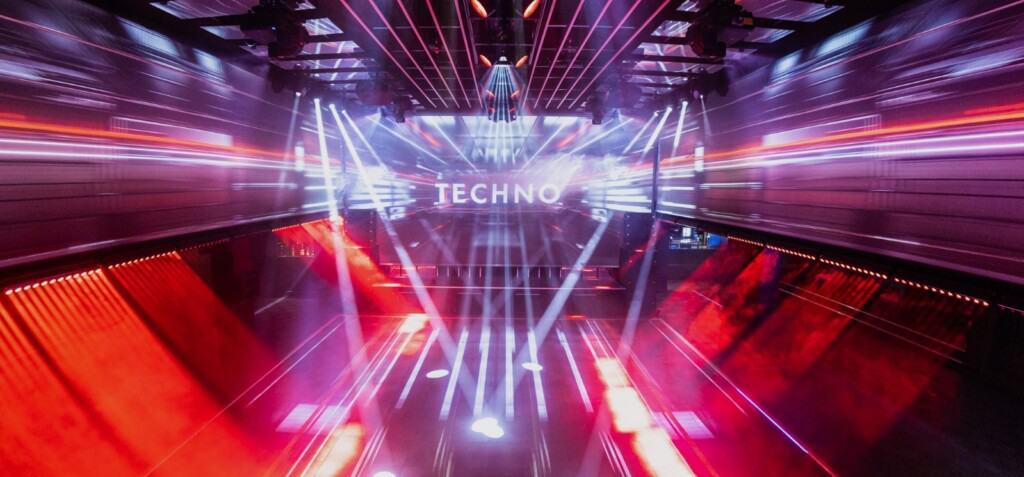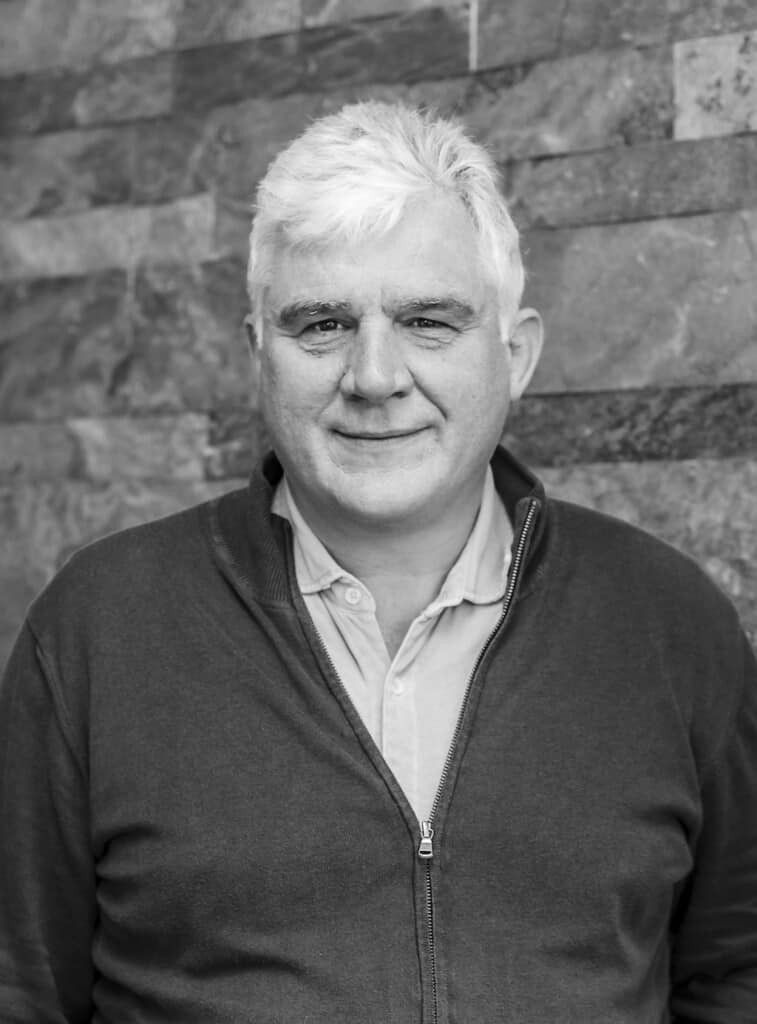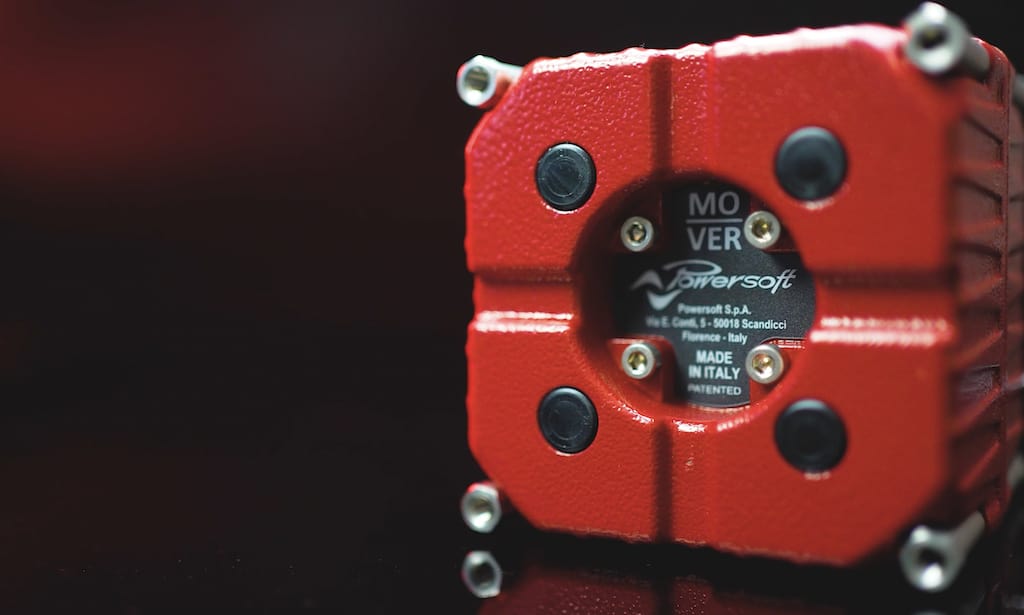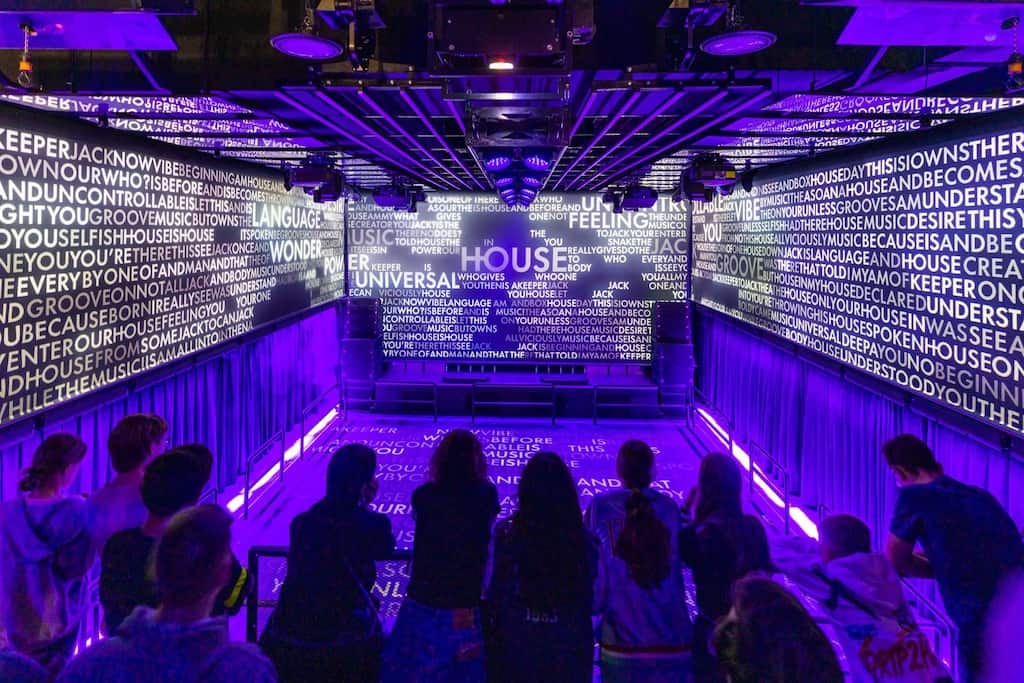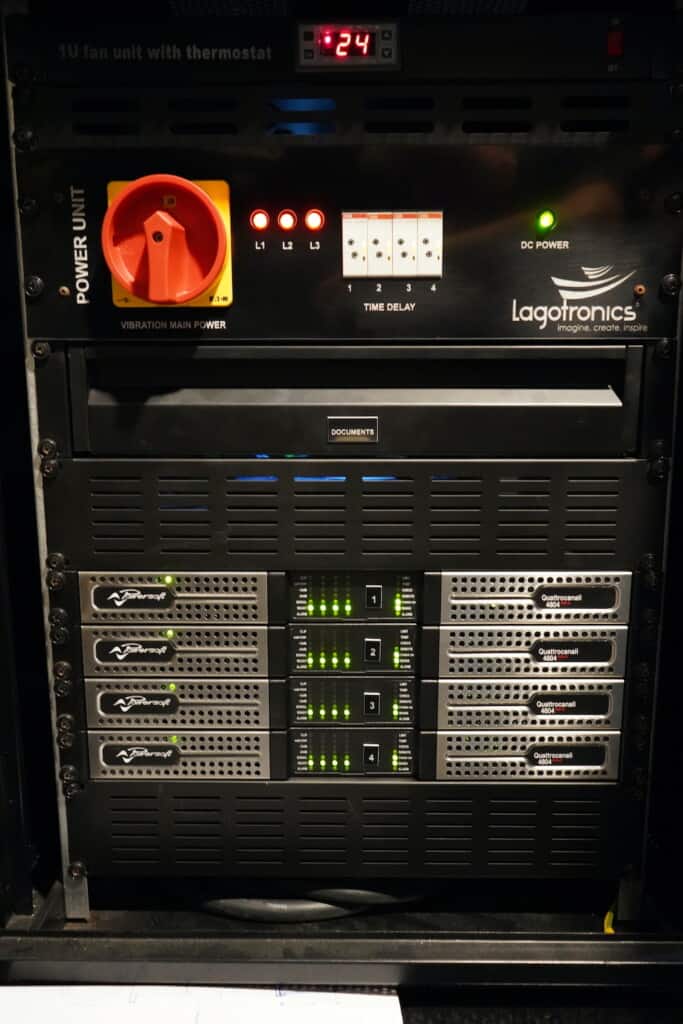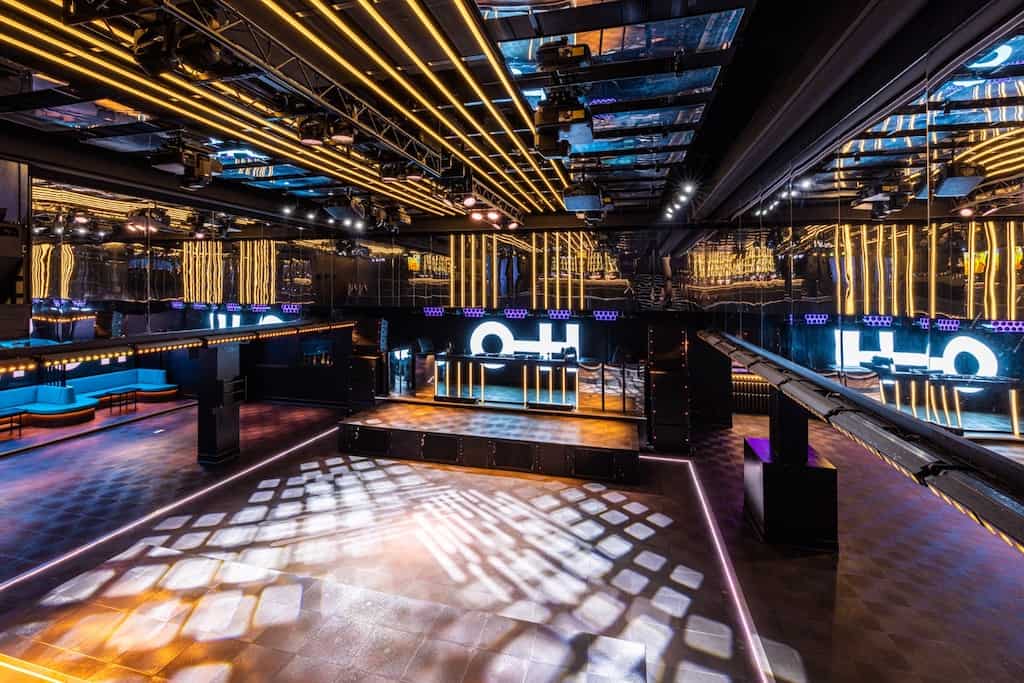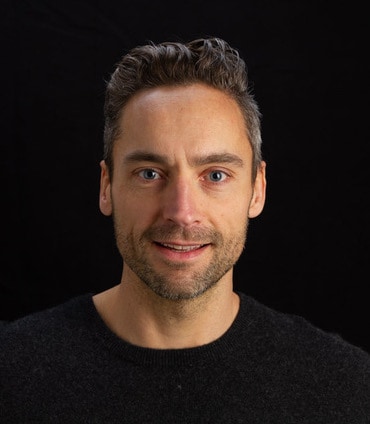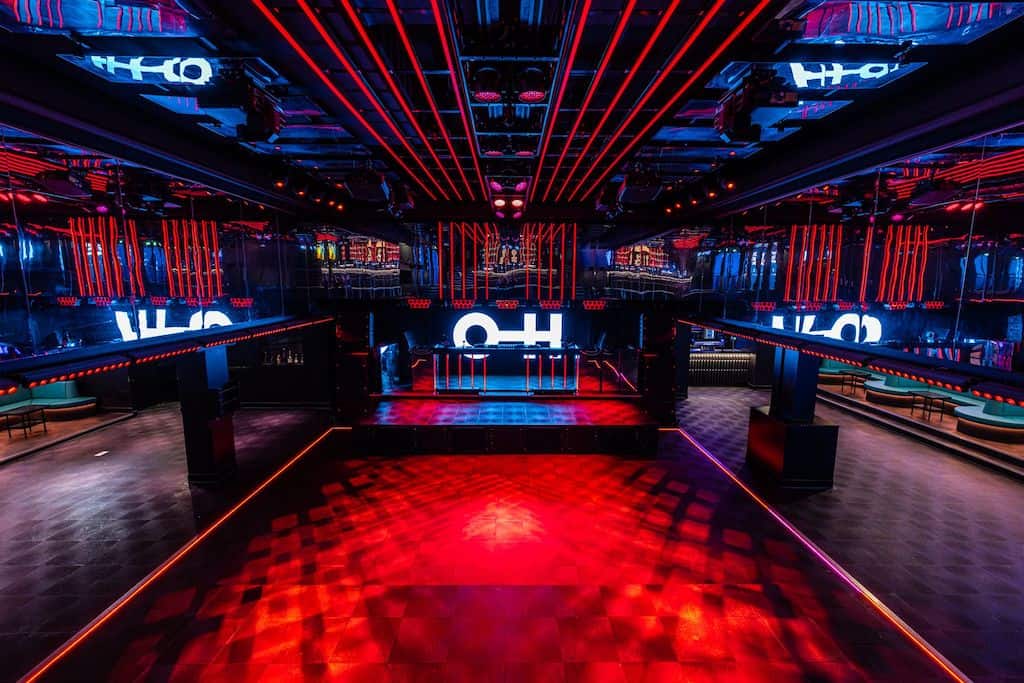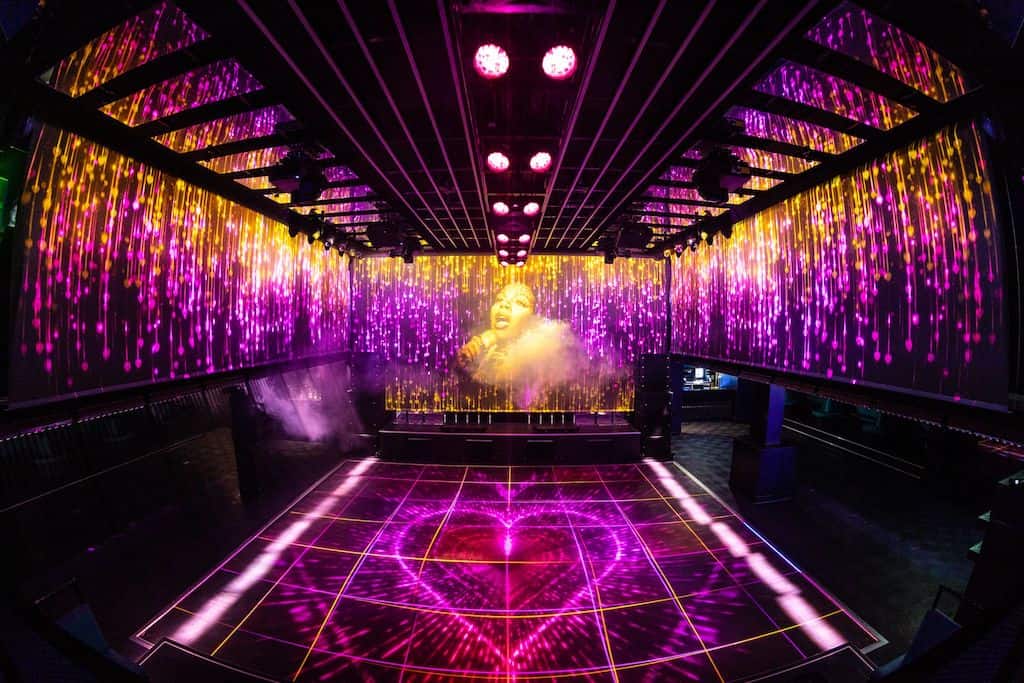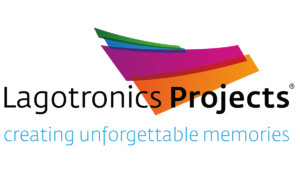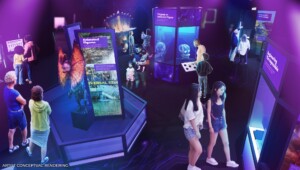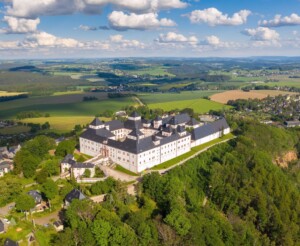Our House, a state-of-the-art museum of electronic music opened in Amsterdam in October 2021. The address was once occupied by iT, one of the Dutch capital’s first house music clubs which ran from 1989 through to 2002.
The museum features six exhibitions and 15 installations, with contributions from Carl Cox, The Frankie Knuckles Foundation, Charlotte de Witte, Armin van Buuren, and Kevin Saunderson, among others. With flyers, photo galleries, interactive turntables, drum machines, documentaries and a 4D audio-visual experience called ‘The Culture Ride’, Our House is the first truly modern museum dedicated to electronic music culture. It also houses one of Daft Punk’s iconic helmets.
In its new iteration, the venue continues its musical legacy with its transformation into a new digital storytelling experience, delivering a 75-minute journey with interactive exhibits, shows and performances showcasing the music genre.
Our House and Powersoft
Our House uses Powersoft’s compact transducer, Mover, to enhance the visitor experience. Marc Kocks, business development manager for the install market at the Italian amplifier specialist spoke to blooloop about the company’s work at the museum.
Outlining his role, he says:
“My role is in business development and global key accounts for Powersoft. I’ve been working now for the company for almost seven years. Within Powersoft, I am also involved in most of the product ideas and go to market for products. With that regard, I’m part of the team introducing Mover to the market and finding applications for the system.”
Mover is a tactile transducer:
“It’s based on a patent introduced by Powersoft some 10 years ago, which includes a moving magnet transducer, which is used in a product called the M-Force. The M-Force is a transducer which is used as a component in subwoofers by loudspeaker manufacturers. Some manufacturers are building subwoofer cabinets based on M-Force technology. The uniqueness of this technology is that instead of a moving coil, we use a moving magnet. This is much more resilient and reliable.
“A moving magnet is also much more durable than a coil, which is quite vulnerable, especially when it’s used in more heavy-duty applications, which normally involve low frequencies and ultra-low frequencies.”
Introducing Mover
The technology has, he explains, been miniaturized:
“This is based on requests from customers, mainly in the theme park market. They wanted to use the product in applications which involve tactile inertial shaking of a platform, a seat, or a floor.”
“The result is the Mover a 9x9x9 cm aluminium die-cast product.”
Moving magnet drivers are composed of a series of multiple permanent magnets. These are mechanically held together and sandwiched between two coils. Since the coils are stationary, there is no moving conductor. This means that they can withstand very high currents, and take full advantage of class-d amplification.
Creating sensations
There are two versions of the Mover, the Direct Drive and the Inertial Drive.
He adds:
“We have a Direct Drive Mover, where we have used a small platform on top of the moving mass, which creates an offset of +/- 15mm. The surface will then not only shake but also give the audience the sensation of falling off or jumping over an object, by moving. The use of that is unique and unprecedented; no other product in the world does quite the same. It can give somebody the sensation of being dropped down or shot out of their chair, or wherever they are.”
“For this particular application, we used the Inertial Drive. The Inertial Drive version can be mounted directly to a surface. The ultra-low frequency reproduction allows us to make an object shake. We are transmitting the audio into ultra-low frequencies and onto an object. For instance, a chair, a floor, or whatever people envision.
“The uniqueness of Mover is that it uses audio. What we see in some applications is that a separate audio track is created, basically an effect track, which feeds a signal into the Mover. Then, based on a queue line or content, it will be triggered.
“Alternatively, as with the application in Amsterdam, it can be triggered by using our amplifiers with DSP, where we have a subharmonic processor. With this subharmonic processor, we can enhance low frequencies. A frequency of 60 Hertz, for example, will have some lower harmonics. You will feel those enhanced frequencies in a very nice and natural way. It actually creates a sensation.”
The many uses of Mover
It is a piece of tech with many applications:
“We see typical applications in theme parks, but also we see applications for theatre, museums, and cinema. Essentially, it has applications anywhere the visitor experience is very important.”
Over the last few years, he points out, huge technological strides have been made in the field of quality vision. For instance, there is the emergence and evolution of digital projectors, HD projectors, and laser projectors. In terms of audio, there are very high-density loudspeakers and many kinds of immersive systems. This technology adds something more to the experience.
In the case of the Our House project, the brief was to create a fourth dimension to the visitor experience:
“They wanted something that would have a lasting impact, and that people would remember. We worked together with a system integrator, Lagotronics, who are innovators. Carlos Gӧrtjes, our main contact at Lagotronics was asked to create a floor that could move up and down.”
Gӧrtjes made a 60×60 cm sample floor section. He then did a test at the Lagotronics factory, where the outcome was a resounding success. Applied to a 64-square-foot floor, it is a spectacular effect, achieved through a double floor construction. The lower level is a hydraulic floor that can rise 20cm. Meanwhile, the second floor, which is on is on springs, has the 64 Powersoft Movers attached to it.
In this application, a certain volume triggers the Movers. So, at key moments they kick in with a rumbling.
A durable solution for Our House
The Mover’s durability, reliability, the amount of force that can be created using it, and the low-frequency extension aspect, make it unique, says Kock:
“At Our House, the Movers have been paired with Quattrocanali 4804 DSP and Dante amplifiers, driving the Movers hard. This creates unprecedented sensations through the floor construction.”
The venue, which has been a nightclub for decades, continues its musical legacy with its transformation into a new digital storytelling experience. It delivers a 75-minute journey with interactive exhibits, shows and performances.
Visitors will trace the compelling evolution of electronic music from its origins as an alternative and secretive underground scene to a chart-topping cultural phenomenon. The museum has achieved this by recreating the club with installations that use mixed technology to tell the story of over 40 years of dance music.
More than a museum
In the evenings, the museum becomes Club Air, a popular nightclub.
The amps and Mover work in conjunction throughout the day. Then, at night, lower frequencies accentuate the music and the bassline on the dancefloor.
Kocks says:
“In the 1970s and 80s, it was one of the best-known and controversial clubs for house music. It was also very well-known in the gay scene. In the 90s and early 2000s, it continued to be popular, as iT. In 2010, it reopened as Air.
“It’s located near Rembrandt Square in Amsterdam, where a lot of clubbing goes on. It has a long history. It is now a new venue called Club One, with a music museum experience called Our House.”
The floor, therefore, has a dual function:
“It’s used for the museum’s purposes to extend and enhance the guest experience. And, in the clubbing context, it has an extra benefit.”
The club, based in the centre of Amsterdam, is subject to certain noise restrictions:
“Because this club wants to offer something extra, they use the moving floor to create subharmonic and sub-low information. So, they have to play less sub-low information to the normal loudspeakers, therefore creating the impression that the system is louder than is the case for users while creating less acoustic pollution.”
A revolutionary product
The Mover is, in short, a revolutionary piece of tech.
“It changes things,” Kocks says. “There are other tactile transducers in the market. But the Mover is four times more powerful than any of its competitors and, because of the moving magnet technology that we are using, much more durable, as well.”
The project, with its dual uses, is an ideal showcase for the Mover’s capacities:
“It showcases the dramatic floating floor application, and the fact we can do a low-frequency extension, so you can have not only a sub-low frequency, which is essential for house music, but also something more, which people don’t feel in other clubs.”
The human body can pick up minute vibrations through haptic perception; bone conduction stimulates the inner ear which translates these into perceivable frequencies, allowing for deeper, richer sound experiences.
He adds:
“It can also reduce the acoustic pollution or environmental burden, especially in the city centre.”
The effect, in conjunction with the 280-degree video content, has the effect of creating something akin to VR, without VR technology.
The creation of Our House
Jeroen Janssen (Jay), the co-founder of Our House, adds his perspective on the new attraction, and its creation.
“I have always engaged myself creatively and culturally in music communities,” he explains. “First as a DJ in the early 90s, and later as a promotor of large, licensed concerts and festivals.”
Jeroen has been with ID&T as a partner for 21 years. A Dutch music and entertainment enterprise, ID&T runs many of the largest electronic dance music events in the world. This includes well-known names like Tomorrowland, Mysteryland, Trance Energy, Sensation, and Awakenings.
“For the last 9 years, I have been their chief creative officer,” he adds. Our department was responsible for programming, booking the artists, overseeing all brand and marketing designs and content, and – last but not least – the overall production of all those events, including all art installations and stage designs.”
During that period, Janssen also had his own company. This created and produced global tour productions for the larger DJs of the time, such as Tiesto, Guetta, etc.
“Since 2016 I have had my own creative (pioneering experience) company; Fourmation Experience Pioneers. This adds sustainable value to spaces through arts, culture and entertainment. We develop retail environments, real estate projects, or outdoor spaces. We add a cultural soul, designing, producing, and managing visitor attractions, cultural exhibitions, and large-scale events.”
Telling the story behind the movement
Charting the beginning of Our House, he explains:
“Working in and for the incredible electronic music culture for all these years made me a small part of its rich history and community. Over the years this subculture (in music) became a worldwide phenomenon.”
Supersized electronic music clubs sprang up in Las Vegas, and Ibiza became internationally recognized as the dance music capital of the world. Electronic music festivals in Europe and the USA became holiday destinations for people from all over the world.
“Yet there was, I realised, a larger group of people that didn’t have a clue about the story behind this worldwide movement.
“Since the Netherlands had an amazing track record within the culture, with pop star DJs such as Armin van Buuren, Hardwell, and Marin Garri, large promotors and events, including the largest electronic music conference in the world: The Amsterdam Dance Event, and huge record companies – Armada Music, Spinnin Records, etc – we felt it was time to create a modern museum experience on the subject.
“After almost 50 years since the start of the movement, it seemed like a good time to make it happen. We wanted to tell the story of how this genre evolved over the world.”
An ideal location
The venue, Janssen explains, was key:
“Our choice of venue was anything but ordinary. To immerse our visitors in the story, the experience space needed to be part of this. We were very lucky to find a building that had been one of Amsterdam’s first electronic music clubs of the late 80s.
“Originally, the building had been an old cinema. There were a few previous renovations and it has had lots of different owners. Although the building was in poor condition, its characteristics were perfect for us. It was a 2000 m2 black box in the heart of Amsterdam, which retained some original elements of the first house music club in Amsterdam.”
He got in touch with the owners and laid out the concept: a hybrid function, where the space would become a modern museum experience during the day, and a completely new club space at night:
“The coronavirus pandemic probably made it an easier conversation,” he says. “We managed to make a deal in which we also became partly club owner. Telling the global story of dance music in such a space was an amazing opportunity.
“An ordinary museum with glass displays and memorabilia wouldn’t work for the tech-savvy generations we want to reach. So, with our experience of creating shows for large audiences around the world, we created a space in which we tell the story of the evolution of electronic music through video and light installations.”
A digital experience
The team added interactive elements:
“Together with a few famous producers we created (partly simplified) electronic music instruments. For instance, synths, samplers, sequencers, and other devices. This lets people interact with the music themselves.”
The history of the culture was the most important focus, he stresses:
“To give that enough emphasis, we created a digital masterclass. 3D characters based on 5 legendary artists – 1 for each decade – take the visitor with them on a trip down memory lane.”
He outlines the museum and the club experience:
“We use the venue’s hybrid DNA in a multi-disciplinary way. But normally the museum and club experience are two separate experiences. Sometimes we use the main museum floor for workshops or masterclasses through our Academy. The academy creates special school programs for various levels of education.
“Sometimes we also use the museum’s main floor after the museum closes to host special nights: movie viewings for specific or cult movies from within the culture, for example. Now and then we use the club part of the building in connection to the museum. We might have a special masterclass from a famous industry talent or DJ, after which the DJ or artist plays an exclusive set in the club section.
“During normal week openings, the club runs 3 nights a week, separately from the museum.”
Our House is a unique museum
It is, he says, a new type of experience:
“It sits between a museum, an immersive show, and a club or festival. We also intend to organise specific side exhibits to go into more depth on specific subjects over the coming years.”
“We use different layers of tech. A lot of the technology we use at our playground is from electronic instrument manufacturers like Ableton, Studio One, and Logic. We use drum computers, samplers, and (analogue) synths for some of the exhibits. We have multi-touch screen devices for a few of the educational installations. Also, we use robotic lights, video projectors, moving winches for our screens and light ceiling during our main shows.”
“And, we have a dance floor that uses the Powersoft Movers to amplify the lower frequencies of the audio in vibrations, so people actually feel sound.”
Our House demonstrates how Mover can bring an extra dimension to attractions, allowing guests to immerse themselves in the action as well as enabling operators to boost engagement and add value to the experience.
For the future of Our House, Janssen adds:
“We are currently talking about opening another Our House venue in the UK. Upscaling our operation to other electronic music-related countries and working on a touring format for larger festivals are part of our international strategy.”
